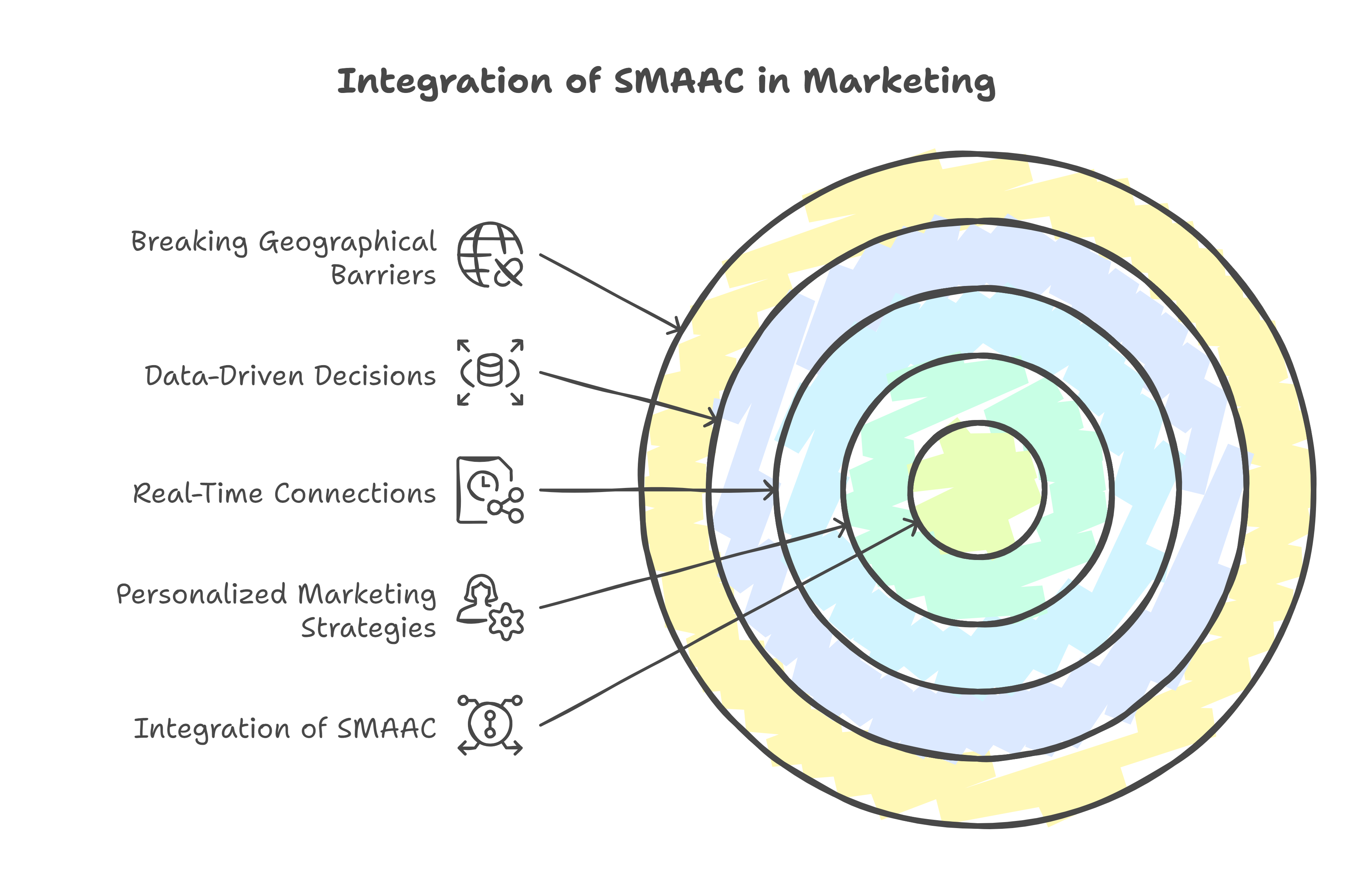Foundations of Inbound Marketing
Introduction- The Age of SMAAC and Paradigm Shifts in Marketing
The marketing world is constantly evolving, and the convergence of Social, Mobile, Analytics, and Cloud (SMAAC) technologies has brought about a significant transformation. SMAAC isn't just about individual technologies, but how they work together to create a powerful ecosystem. This document will explain these technologies, how they've changed marketing strategies, and how integrating them can impact businesses.
Understanding SMAAC Technologies
1. Social
- What is it? This refers to social media platforms like Facebook, Twitter, LinkedIn, and Instagram.
- How it's used: Social media enables businesses to communicate with their audience, build their brand, engage with their community, and essentially create a new, more effective form of word-of-mouth marketing.
- Impact: It has transformed how businesses interact with their customers by providing direct communication channels.
2. Mobile
- What is it? This represents mobile devices like smartphones and tablets.
- How it's used: Mobile devices have become the primary way many people access the internet. This technology includes using mobile-friendly websites, mobile apps, and location-based services.
- Impact: It has changed consumer behavior and provides new avenues for marketing and service delivery.
3. Analytics
- What is it? This involves tools and techniques to collect, process, interpret, and visualize data.
- How it's used: Analytics covers various aspects including web analytics, social media analytics, and customer data analysis.
- Impact: It provides insights into customer preferences and behavior, enabling businesses to make better, data-driven decisions.
4. Cloud
- What is it? This refers to cloud computing platforms and services which include services like SaaS, PaaS, and IaaS.
- How it's used: Cloud technologies provide access to scalable computing power, storage, and on-demand software.
- Impact: It enables businesses to reduce IT costs, enhance data storage, and improve accessibility of resources.
Cloud Service Types
- SaaS (Software as a Service): This is when a company uses a third party to host and provide software applications over the internet. Examples include Salesforce and NetSuite.
- PaaS (Platform as a Service): This model involves third-party companies hosting application development platforms and tools over the internet. (e.g., AWS Elastic Beanstalk, Google App Engine)
- IaaS (Infrastructure as a Service): In this case, a third-party provider hosts servers, storage, and computing resources which can be accessed via the internet (e.g., AWS, Microsoft Azure).
- FaaS (Function as a Service): With this model, users can run code in the cloud without the need to worry about the underlying infrastructure (e.g., AWS Lambda, Google Cloud Functions).
How SMAAC has Shifted Marketing Strategies
1. From Mass to Personal
- The shift: SMAAC enables businesses to move away from generic, mass marketing and towards personalized, customer-centric strategies.
- Impact: This creates more meaningful relationships with customers and increases engagement.
2. Real-Time Connections
- The change: It facilitates instant interactions with customers through various channels.
- Impact: It allows businesses to gather instant feedback and quickly respond to market trends.
3. Data-Driven Decisions
- The change: Analytics tools provide deep insights into customer preferences, behavior, and market trends.
- Impact: Marketing decisions are now based on data and analysis, making them more effective and efficient.
4. Agile Marketing
- The change: It helps businesses use iterative and experimental approaches in marketing campaigns.
- Impact: It allows for quick adaptation and flexibility based on feedback and market changes.
5. Breaking Geographical Barriers
- The change: SMAAC has helped businesses to enhance operational effiencies and enables access to real time data for decision making.
- Impact: This allows the business to break geographical barriers and reach wider audience. Integration of SMAAC in Marketing Breaking Geographical Barriers Data-Driven Decisions Real-Time Connections Personalized Marketing Strategies Integration of SMAAC
The Power of Integration
- Synergistic Effect: When SMAAC technologies are used together, they create a powerful combined effect that is greater than the sum of their individual effects.
- Holistic Views: Combining data from all areas of SMAAC provides a complete view of customers, helping in better decision making and optimal operations.
- Customer Experience: By implementing a combined strategy, businesses are able to provide a more personalized experience with targeted content and seamless engagement.
- Efficiency Automation and cloud platforms help to reduce IT costs and enhance scalability, which enables streamlined operations.
-
Growth By utilizing all the aspects of SMAAC, businesses can achieve growth with more targeted strategies

